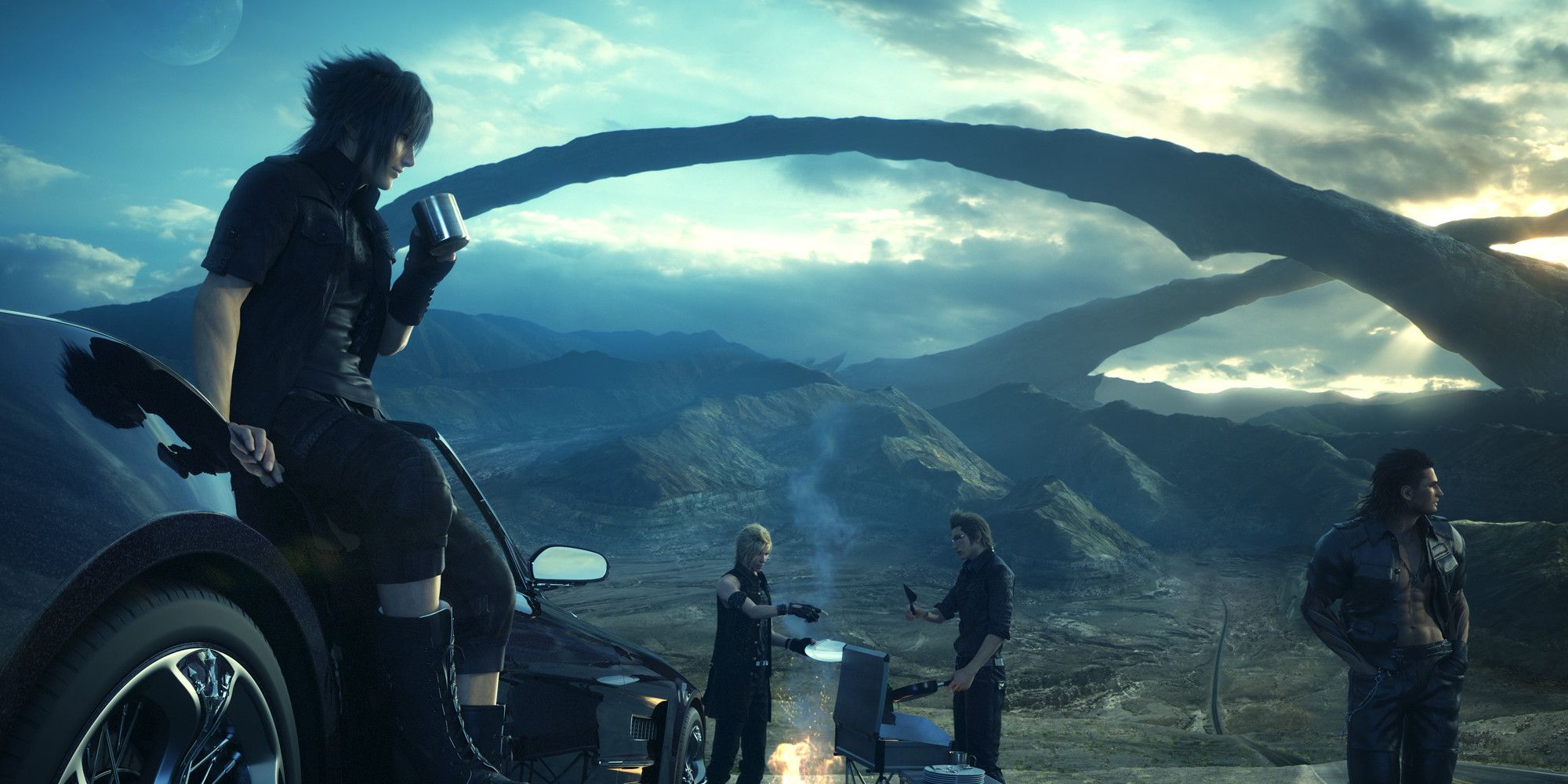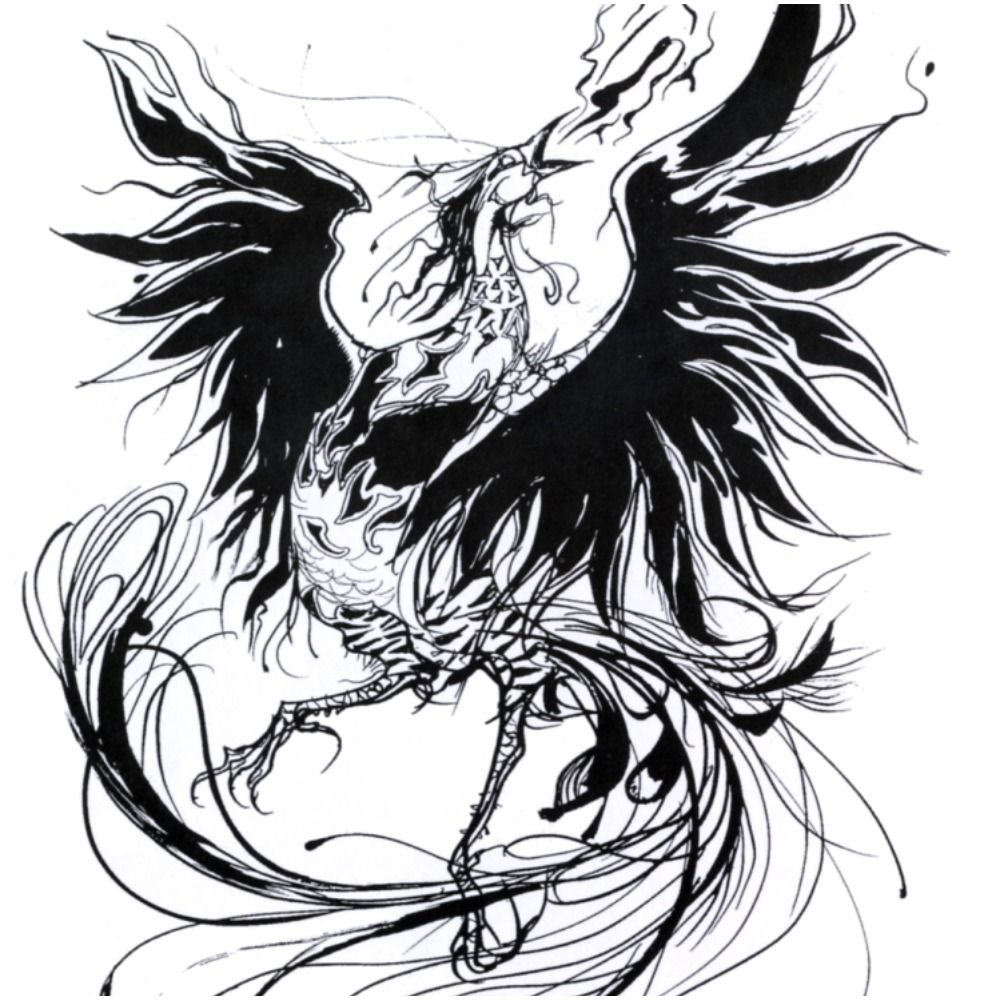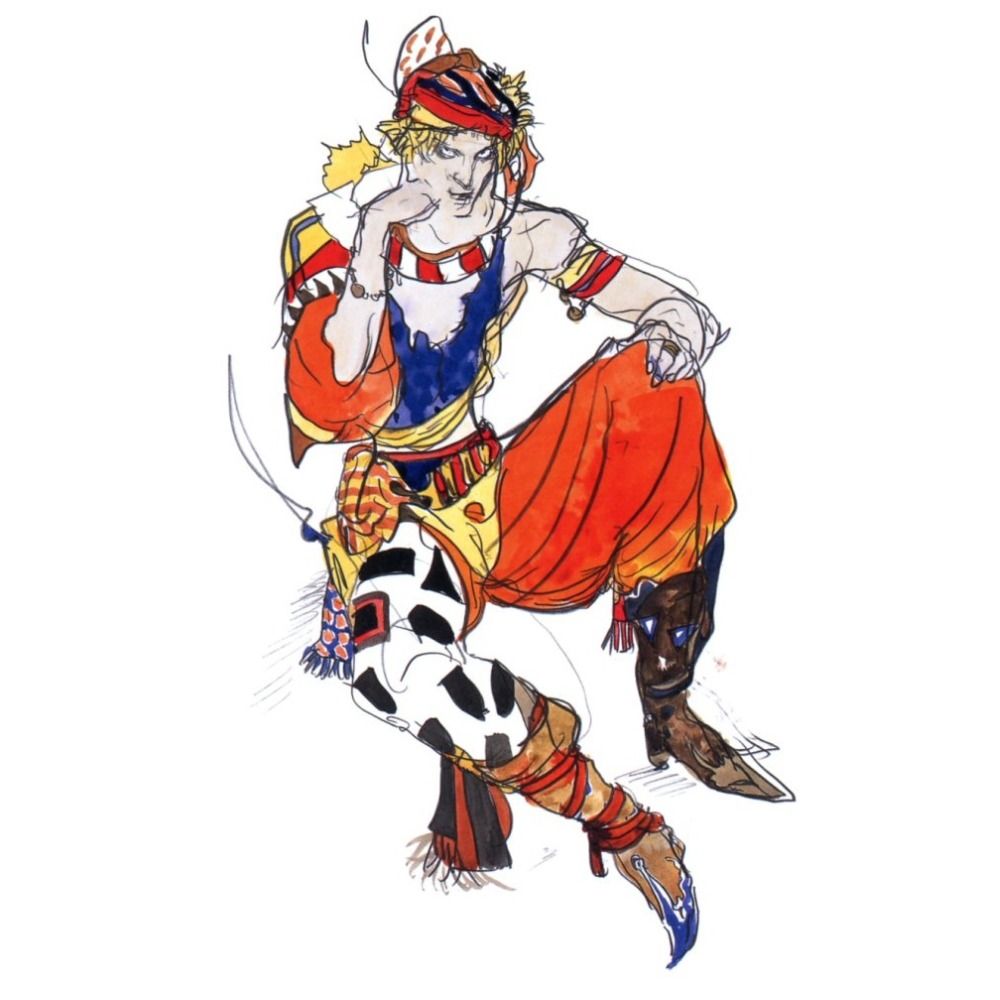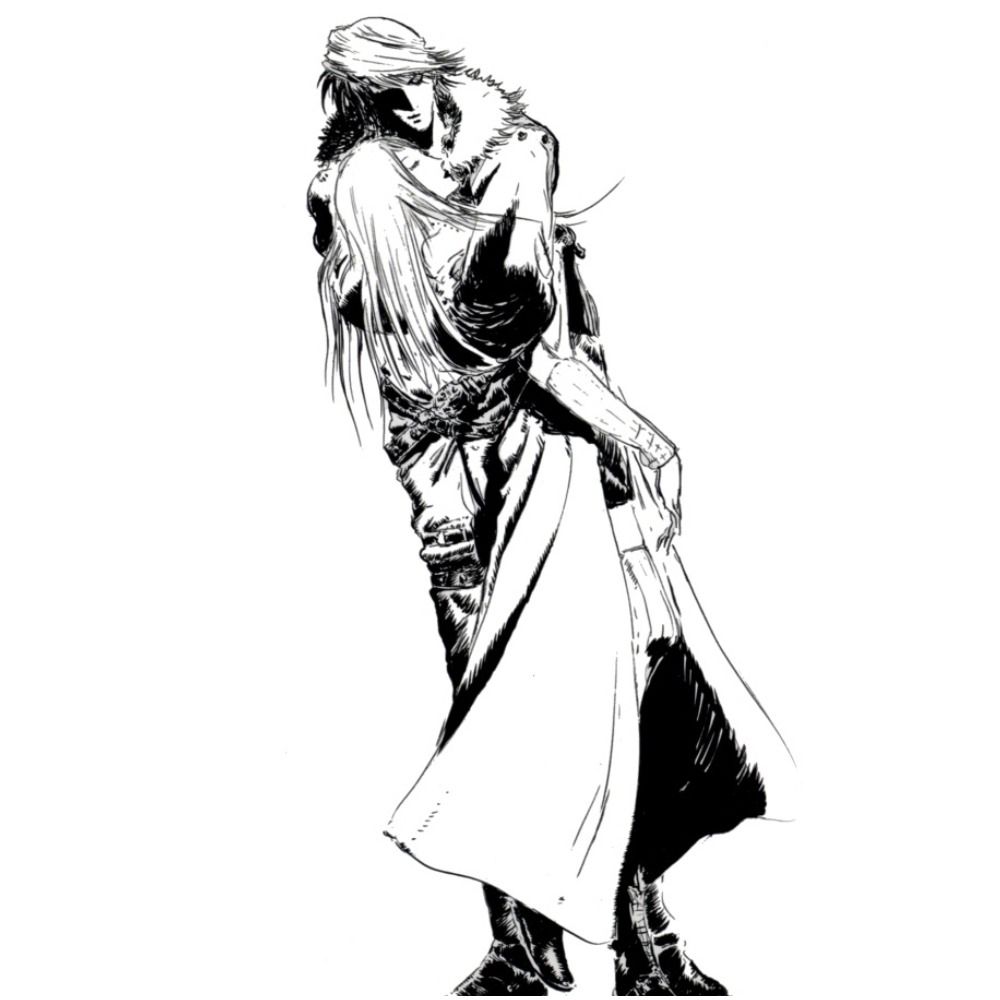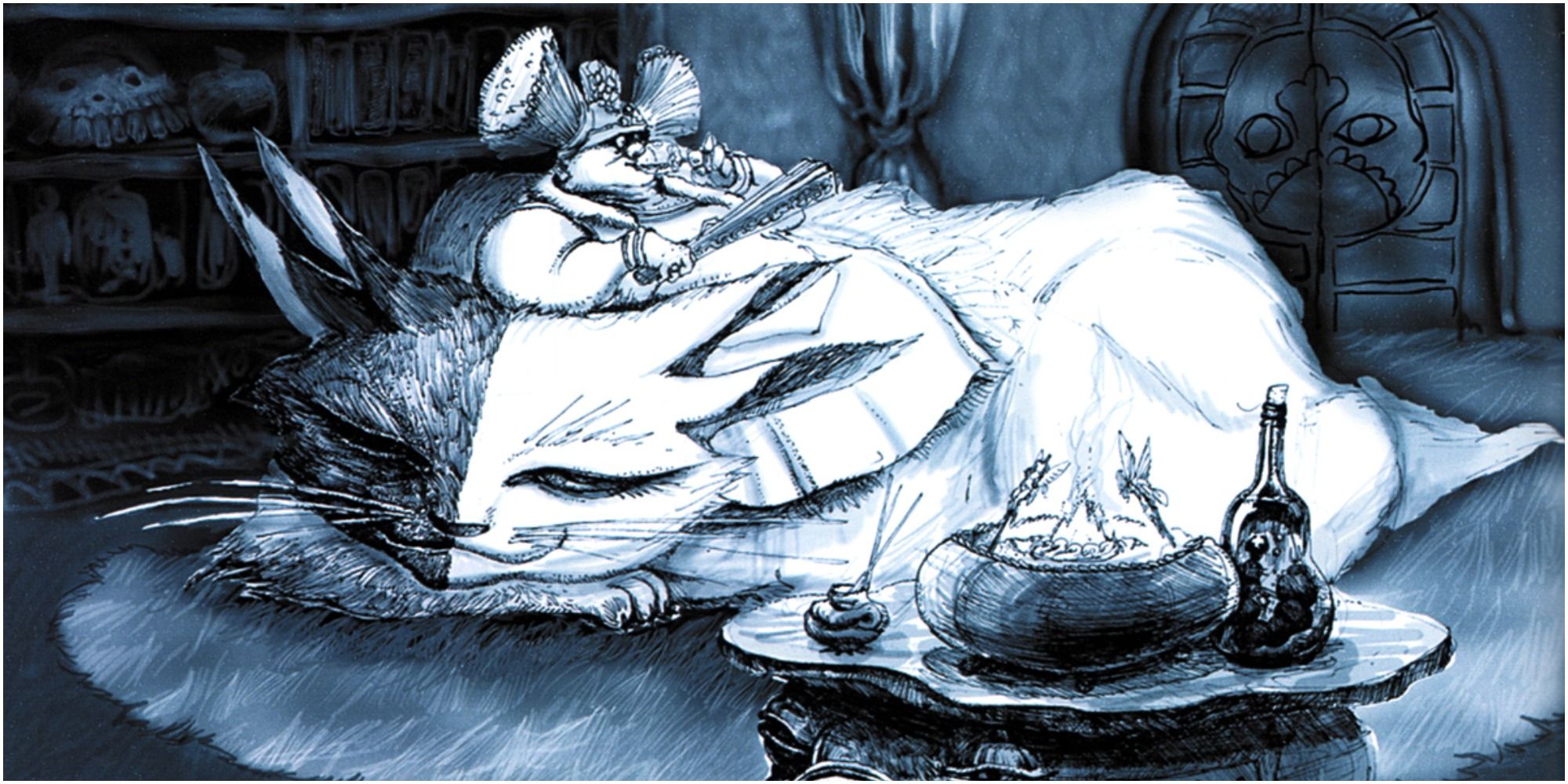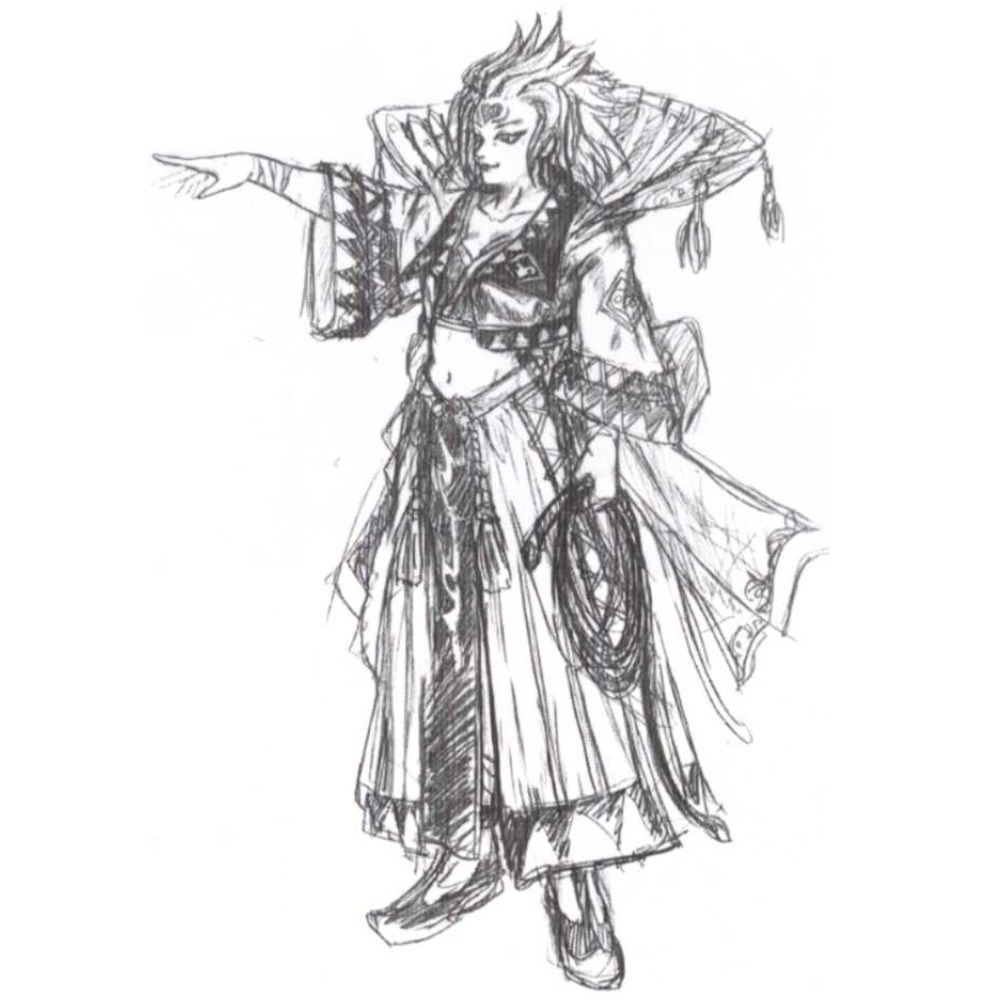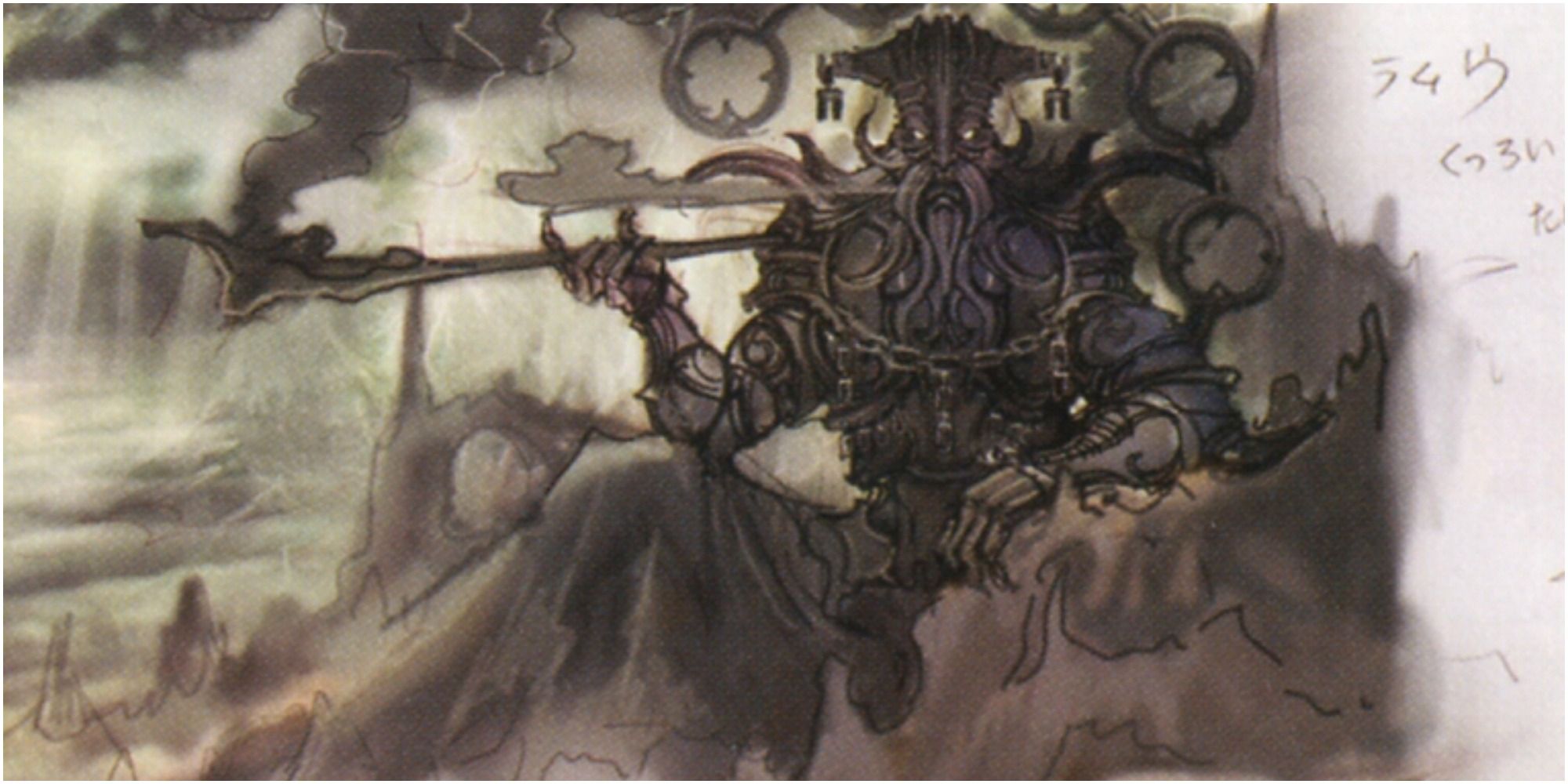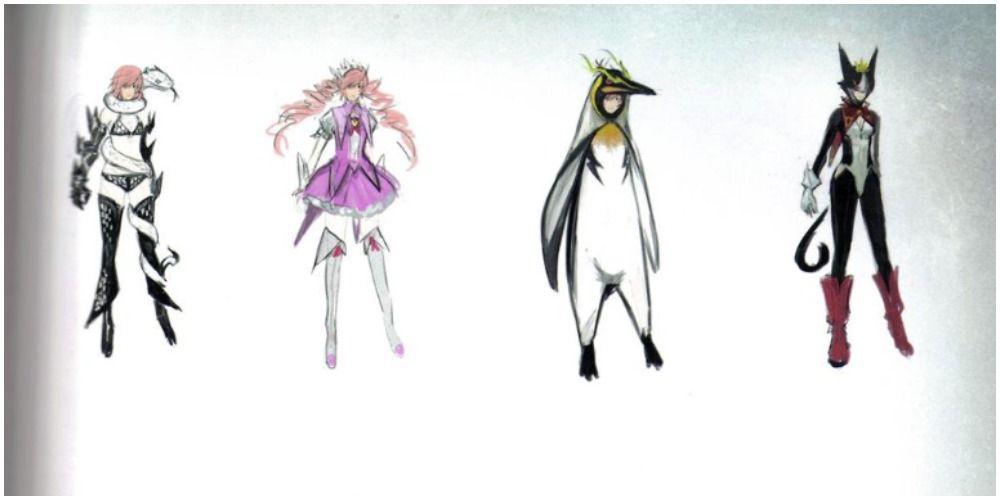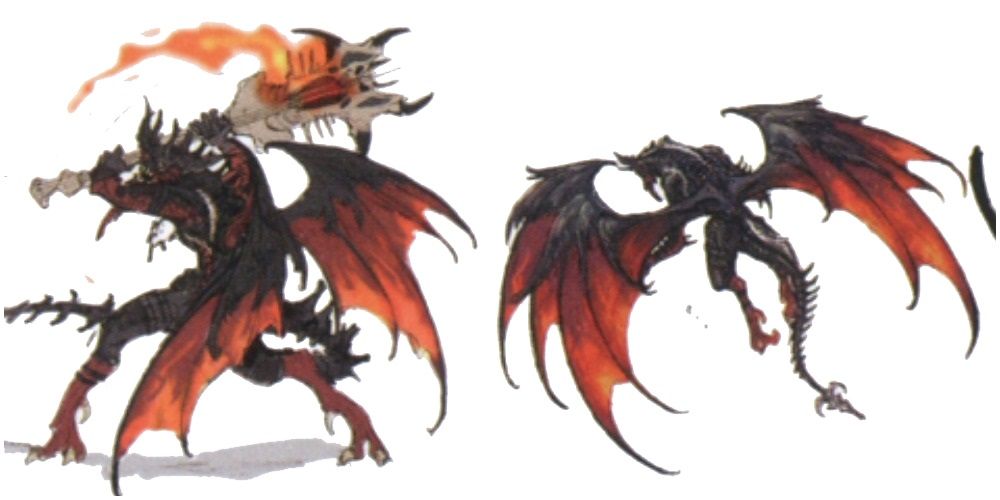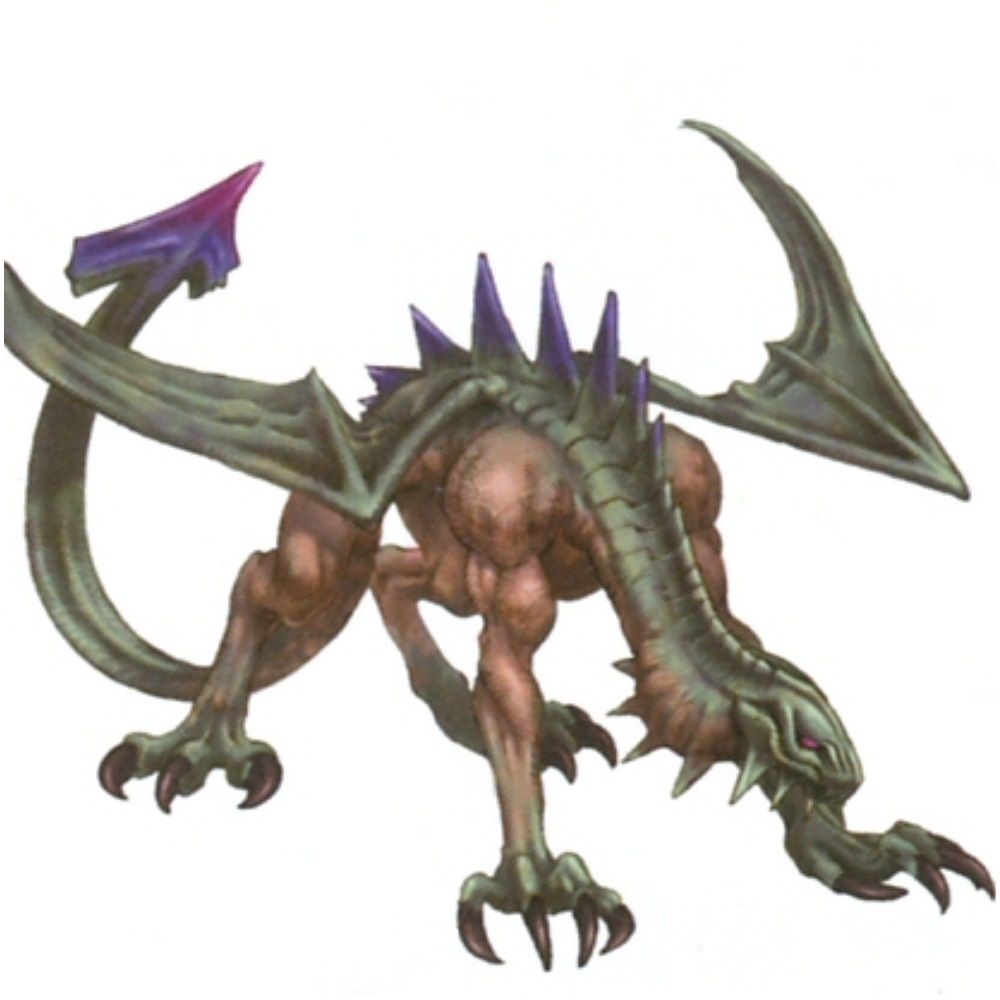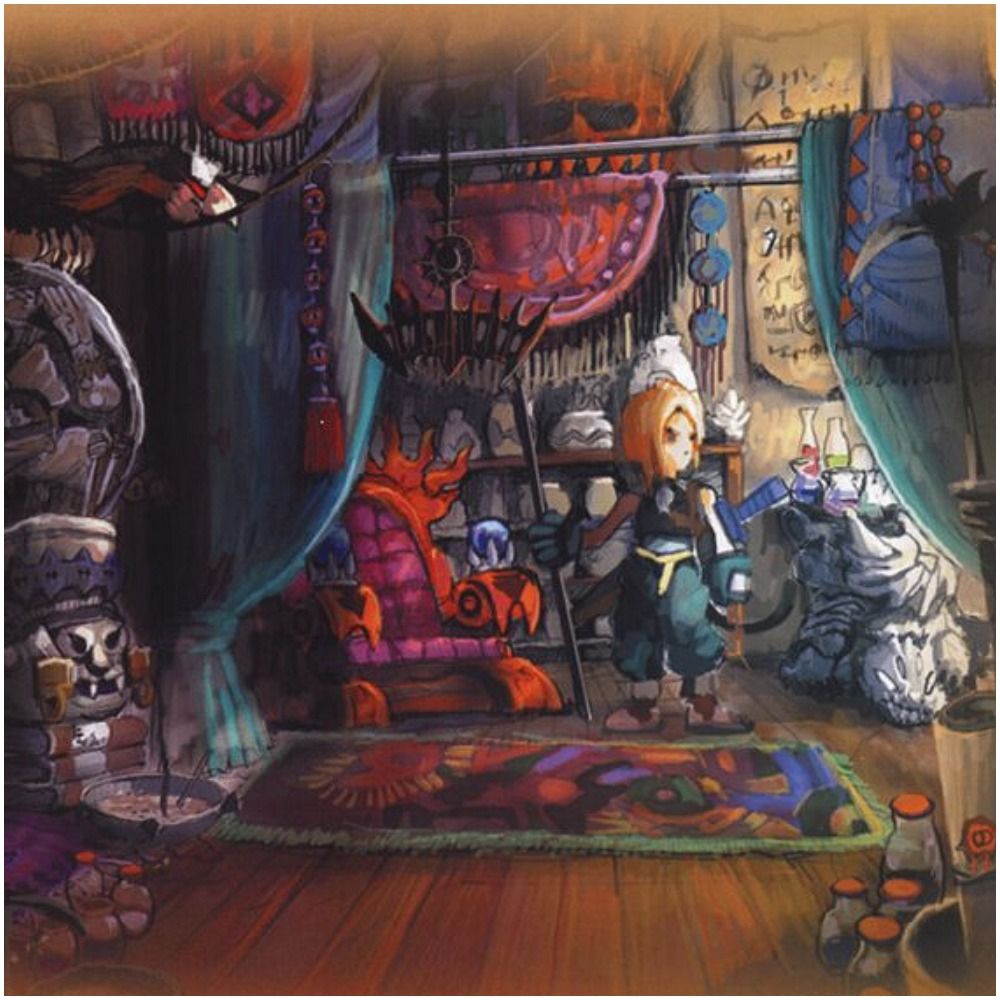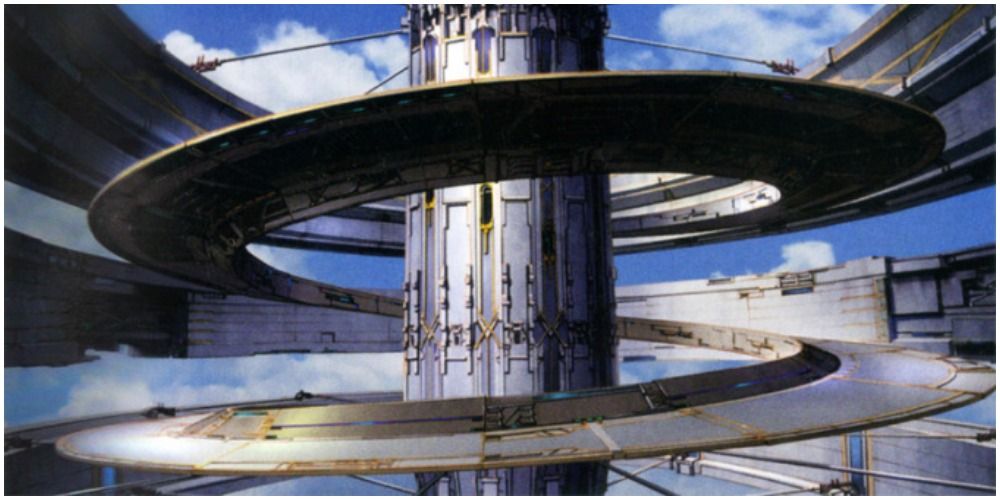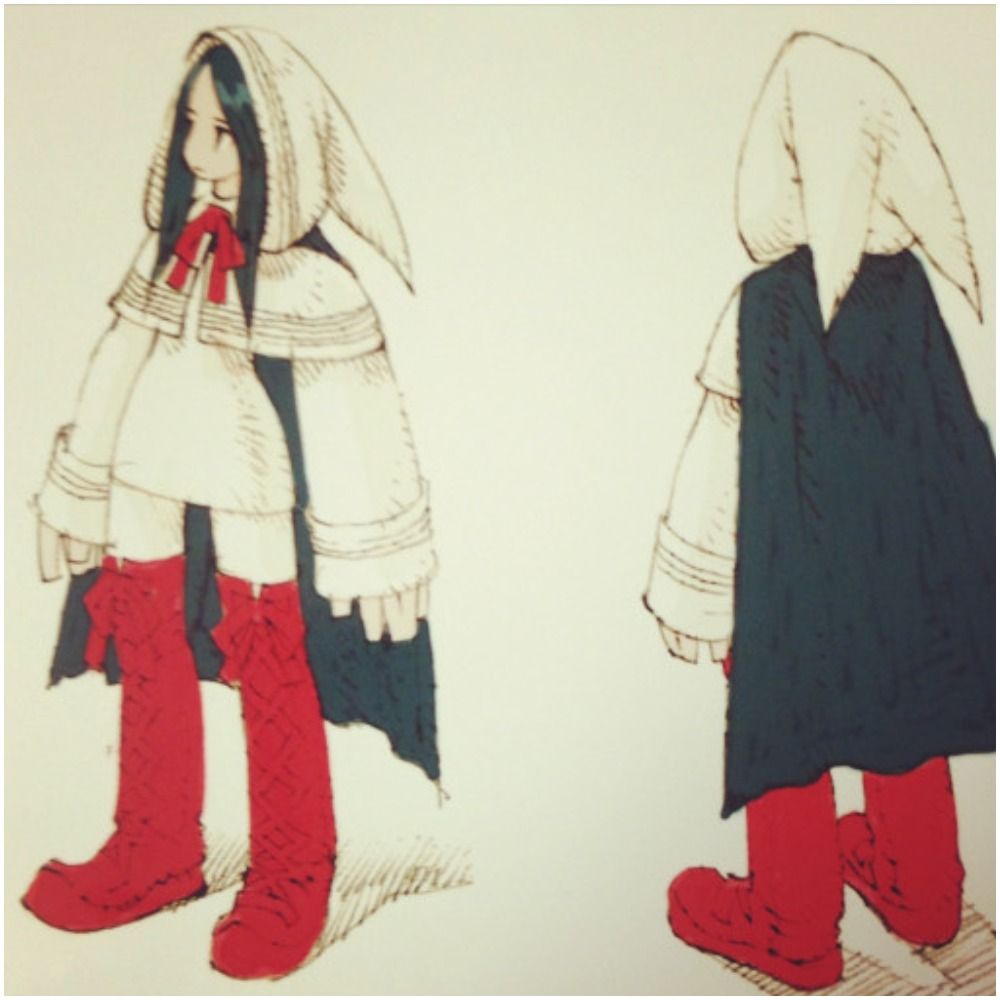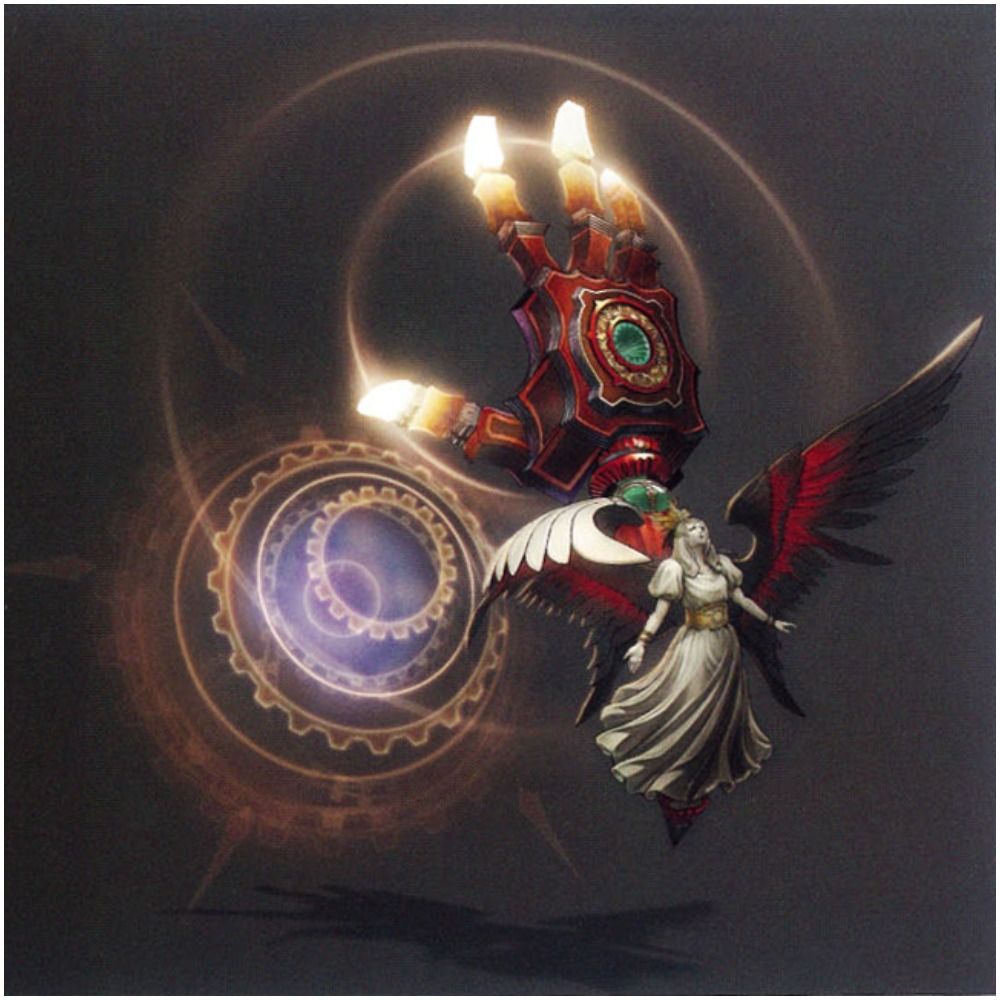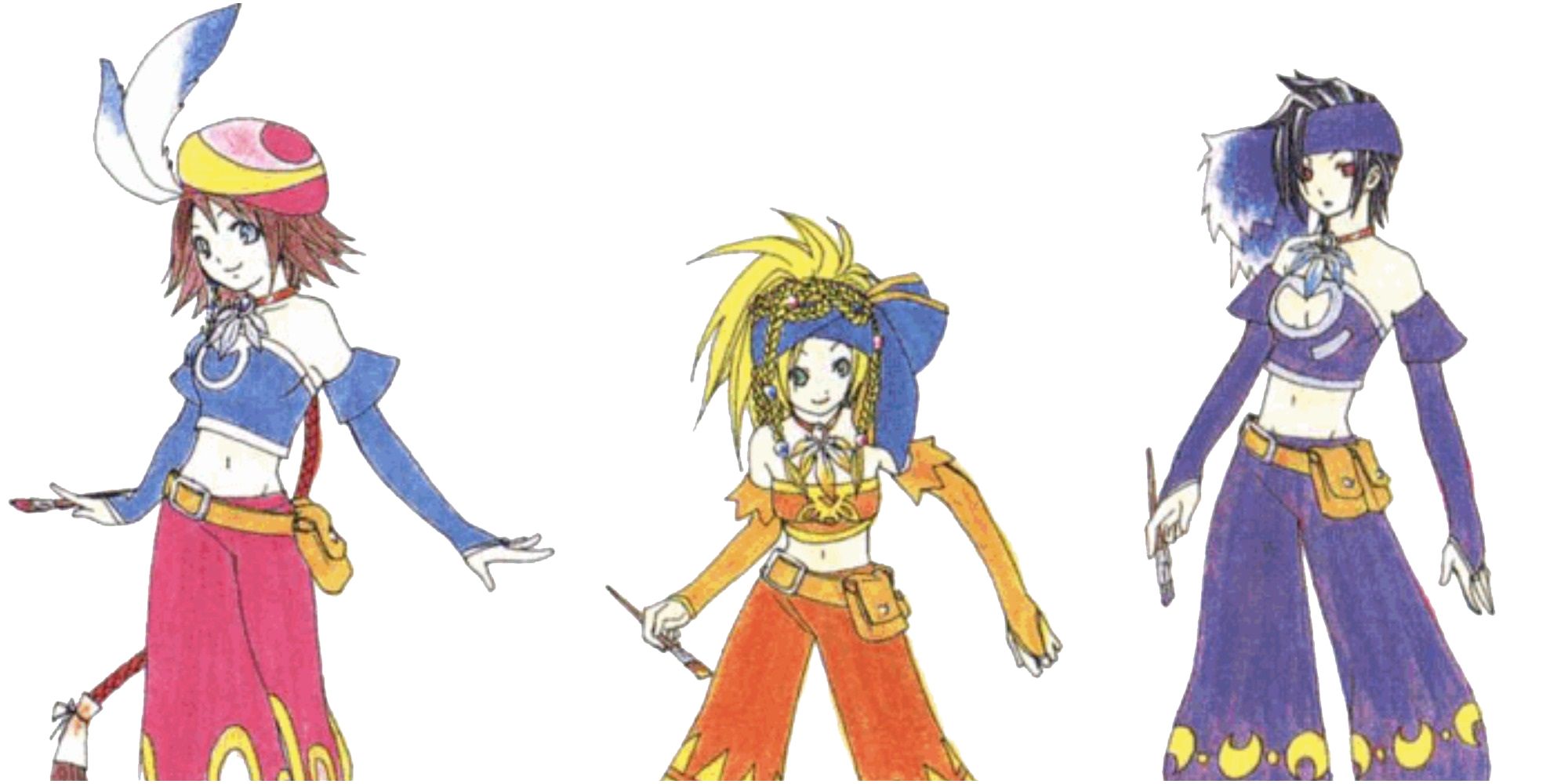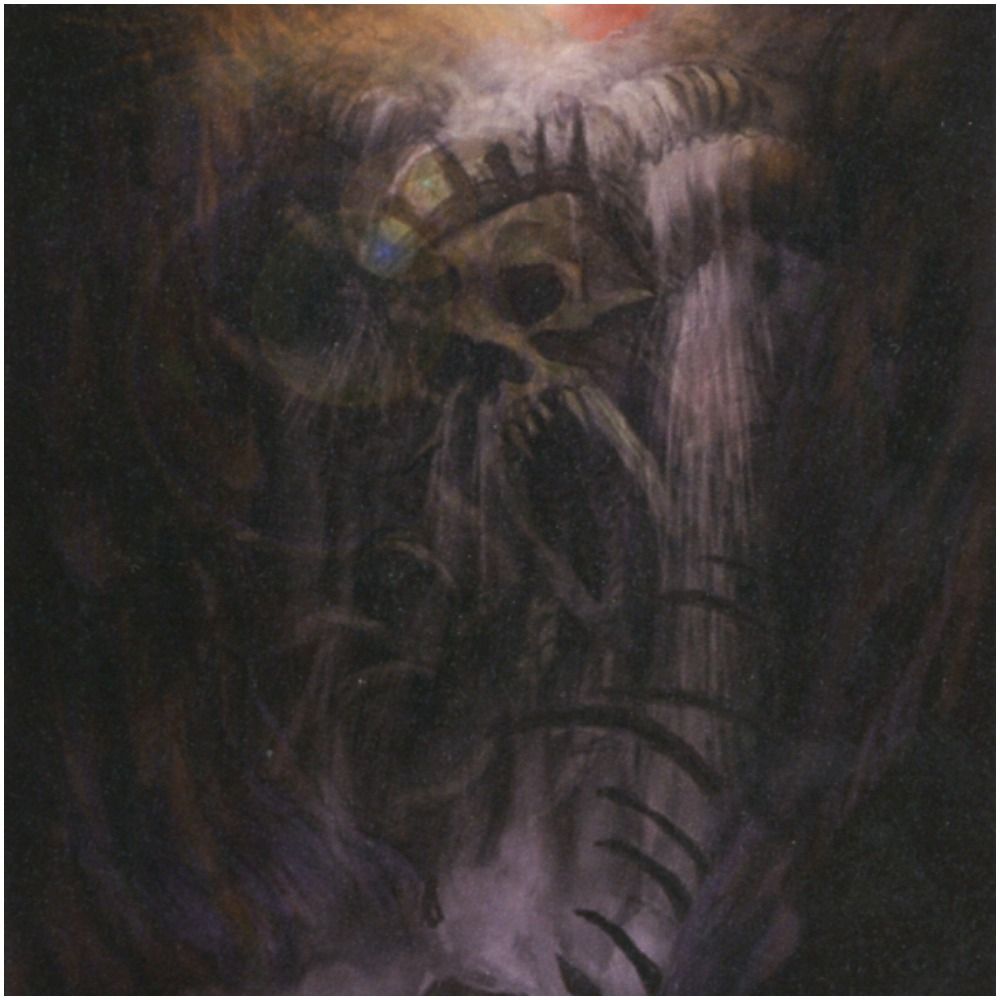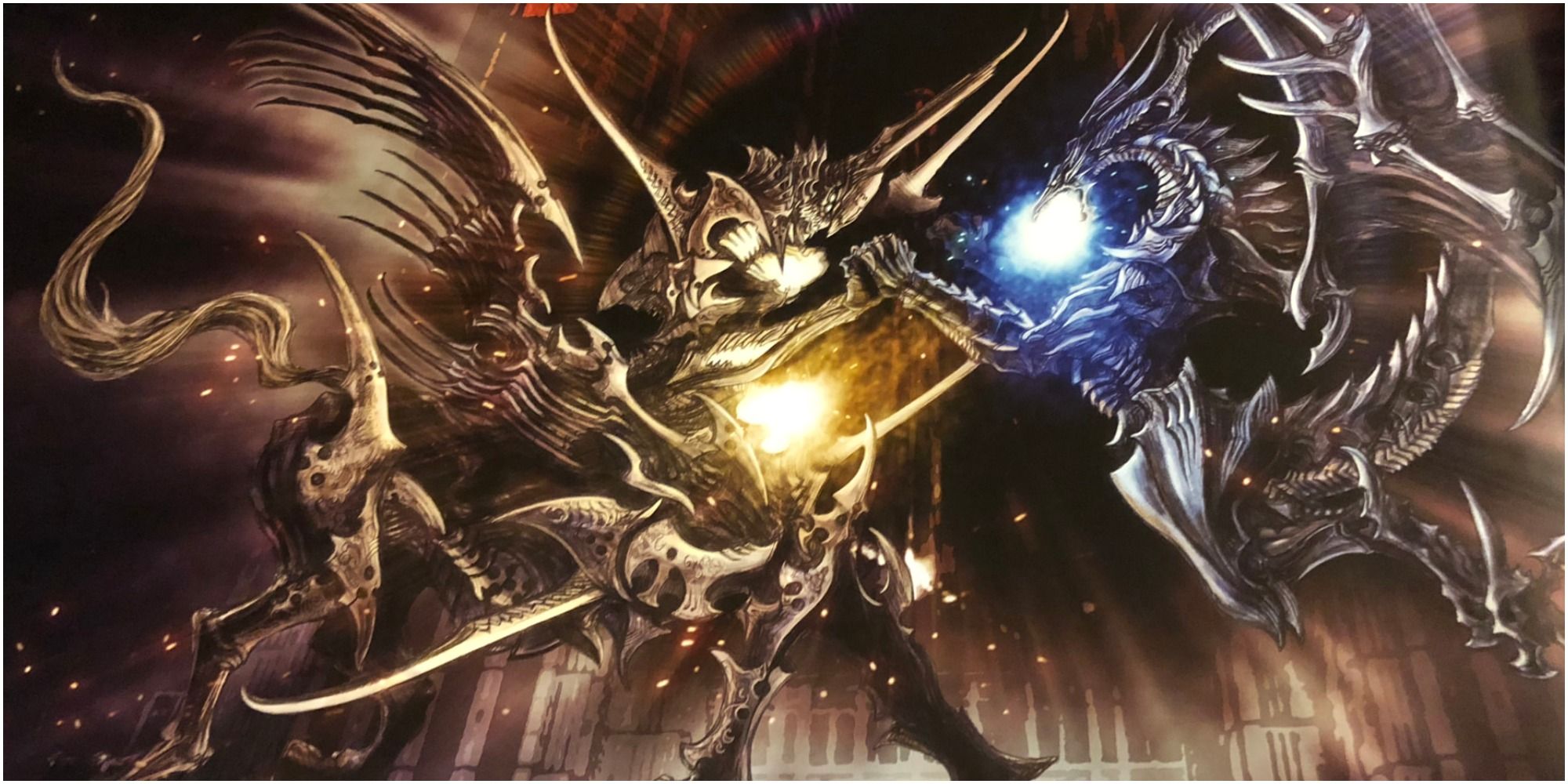The main character and monster designer for the early Final Fantasy titles was Yoshitaka Amano, whose incredible artwork had to be condensed into sprites, meaning that most of their original beauty was lost in the adaptation process.
As time went on and the video game hardware became stronger, it became easier for the designs that were made on paper to make their way into the Final Fantasy games.
The fact that the locations were often just a static image (at least until Final Fantasy X) and the monsters were just one sprite meant that it was easier for them to look impressive. The real casualty of the Final Fantasy sprite era were the playable characters, as they often looked nothing like the beautiful concept art that was created for them by Amano.
The artwork of the Final Fantasy series has been released in many different books and magazines over the years, most of which would never have left Japan if it weren't for the work of passionate fans. These have included pieces of concept art for characters, monsters, and locations that never made their way into the games, even though they really should have. These pieces of art have given us a glimpse into what should have been.
We are here today to discover the unused pieces of concept art for the Final Fantasy series that should have been included in the games - from the original design of the Ultimate Weapon, to the original epic battle that awaited Bahamut in Final Fantasy XV.
Here are the 20 Unused Final Fantasy Concept Art Designs Way Better Than What We Got!
Ultimate Weapon Almost Had A Different Design
One of the benefits of the English version of Final Fantasy VII coming out later than the original in Japan is that we were given a more complete view of the Weapon monsters. In the Japanese version of Final Fantasy VII, you could only fight Ultimate Weapon, with the battles against Diamond Weapon, Emerald Weapon, and Ruby Weapon being added for the western releases.
Ultimate Weapon wasn't originally a Weapon monster at all. Instead, it was a different creature called the Onyx Dragon.
The final design of Ultimate Weapon gave it several spiked horns on its head, while the Onyx Dragon only had two that pointed downward, giving it a more demonic appearance. Onyx Dragon also had arms that ended in two claws instead of hands and a bipedal design, rather than the centaur-like body that it had in the final version of the game. It seems as if the Onyx Dragon's design was split into two, with the head & wings being used for Ultimate Weapon and the body and claws being used for Ruby Weapon.
The Phoenix Almost Debuted In The Original Final Fantasy
The Phoenix is a recurring creature in the Final Fantasy series, where it has often appeared as a summon that can revive fallen comrades while also damaging the enemy with a fire attack.
The Phoenix debuted in Final Fantasy V as a summon, but it was originally going to appear in the first Final Fantasy game, which would have made it one of the few recurring creatures that had been in the series since day one. Yoshitaka Amano created a design for a Phoenix monster that would have been fought at some point in the game, but it went unused, making it one of the few creature designs that he made for the original Final Fantasy that never actually appeared in the game.
Kain Almost Had A Better Design
Kain Highwind's design was based on Ricard Highwind from Final Fantasy II - which meant that he wore a heavy suit of armor with a draconic design and used lances and spears in combat. Kain's design would go on to form the basis of almost every other Dragoon in the series.
Kain Highwind was originally going to have a totally different design, with his dull suit of armor replacing a colorful and striking suit of clothes. Kain is never seen out of armor in Final Fantasy IV, so this design went unused. It seems that elements of Kain Highwind's unused outfit were given over to Edward, as his clothes and color scheme bears a resemblance to the ones originally worn by Kain.
We Almost Saw Exdeath's True Form
Exdeath from Final Fantasy V is never shown outside of his armor until the end of the game, at which point he returns to his original form (a giant tree) and uses the power of the Void to transform into a sprawling monstrosity called Neo Exdeath. The question of what exactly was inside Exdeath's armor was something that fans wondered about for years.
Exdeath was created from evil spirits that were bound inside a tree, so why did he have a human looking form?
Yoshitaka Amano created concept art for Exdeath's body, where he has dark skin and white hair and is adorned in the clothes of a sorcerer. This outfit was far more interesting than the suit of armor that Exdeath is sporting throughout the game and it's a shame we never saw him like this during a boss battle.
Squall Was Almost Propping Up Rinoa On The Cover Of Final Fantasy VIII
Final Fantasy IV was the first game in the series to use a recurring style for the logo of the series, with the name being placed in front of an image of something important in the game, like the Meteor in Final Fantasy VII or the Oracle in Final Fantasy XV. Final Fantasy VIII was meant to be the series' first attempt at basing a game around a love story. This was reflected in the logo of the game, which shows Rinoa and Squall holding each other.
The logo for Final Fantasy VIII underwent numerous different revisions before a design was chosen. The unused designs were far more intimate and showed Squall holding up Rinoa with an actual romantic expression on his face, rather than the sad face that he is pulling in the final version of the logo.
Queen Brahne Had A Cat Couch
Queen Brahne is one of the most successful villains in the Final Fantasy series. With the help of Kuja, she managed to crush several different nations and bring them under her control. Brahne had an army of artificial black mages and the stolen ability to summon eidolons, which she used to wipe cities from the map.
Queen Brahne may have been an omnicidal dictator, but she still loved cats, especially giant ones. In her concept art, she is seen using a giant half black/half white cat as a couch, which presumably could also have acted as a mount. The giant cat never appears in Final Fantasy IX, but Queen Brahne is shown holding a big black cat in one of the portraits in Alexandria Castle.
Leblanc's Outfit Was More Conservative
Final Fantasy X-2 is one of the games in the series that you may be embarrassed to play in front of other people, due to the skimpy outfits worn by the cast, the cheesy (and often terrible) voice acting, and the shameless fanservice that permeates the whole game.
Leblanc has one of the most objectified outfits in the Final Fantasy series, with its plunging neckline that drops low and shows off her undergarments.
This is to say nothing of the cringe-inducing sequence where Yuna has to give Leblanc a massage, resulting in some inappropriate noises. Leblanc's outfit was originally a lot more conservative and covered more skin, with her clothes being more reminiscent of the kind worn by mages in the earlier games in the series.
Ramuh Was Almost A Pulse Fal'cie
Ramuh makes a brief appearance as a fal'Cie in Final Fantasy XIII during an FMV sequence where he battles Ifrit. This short cameo is all we see of Ramuh in the Final Fantasy XIII trilogy. There were many different unused fal'Cie in Final Fantasy XIII and its sequels that were based on summons from earlier games in the series. Ramuh was one of these, as he was originally meant to appear as a Pulse fal'Cie that towered over the landscape and smoked a huge pipe.
This version of Ramuh has a metallic structure on its back that consists of several circles being suspended over the landscape. These circles are a homage to the drums held by Raijin, the Shinto god of lightning. This homage is meant to reflect Ramuh's status as a divine being.
Lightning Almost Dressed Like A Penguin & Cait Sith
Lightning from Final Fantasy XIII was an attempt at creating another aloof and cool main character, in the same mold as Cloud Strife and Squall Leonhart. This meant that Lightning was a totally serious character who rarely goofed off or had any light-hearted scenes.
The garb system in Lightning Returns: Final Fantasy XIII gave the players a chance to dress Lightning in whatever outfits they liked, giving them a chance to make Lightning wear comedic costumes or clothes that showed more skin than normal. Two of the unused garbs for Lightning Returns: Final Fantasy XIII would have allowed you to dress Lightning as either a penguin or Cait Sith from Final Fantasy VII. It's unknown why these were cut, as there were plenty of other goofy garbs in the game.
Emperor Palamecia Had Several Different Demonic Designs
Emperor Mateus underwent a drastic physical transformation over the course of Final Fantasy II, like many of the Final Fantasy villains that came after him.
He started out looking like an anime version of Jareth the Goblin King and ended up looking like an armored demon.
The limitations of the Nintendo Entertainment System meant that the full design of Emperor Mateus couldn't be shown during the last battle of Final Fantasy II, so the developers decided to just stick with the top half of his body. The original designs for Emperor Mateus depicted him as a much more sinister being, with one showing his face cloaked in shadows, while another gives him a lion's maw. His suit of armor also underwent several changes, as they originally featured eyes incorporated into their designs.
Diabolos Was Almost A Fal'cie
Diabolos debuted in Final Fantasy VIII as an optional Guardian Force that you needed to defeat in battle. He was one of the few summon monsters to ever be added into one of the older games, as it was possible to acquire Diabolos in Final Fantasy VI Advance.
Diabolos was planned to appear in Final Fantasy XIII as one of the fal'Cie. There were numerous different designs created for the Diabolos fal'Cie, one of which resembled Anima from Final Fantasy X and several that gave him a draconic appearance. The concept art for Diabolos didn't go totally unused, as some of his designs were reworked into the Faeryl and Aeronite bosses that appeared in Final Fantasy XIII-2 and Lightning Returns: Final Fantasy XIII.
The Elemental Fiends Almost Appeared Twice In Final Fantasy IX
The idea of facing four bosses that each represents one of the classic elements is a recurring theme throughout the Final Fantasy series, starting with the Four Fiends in the original Final Fantasy.
Final Fantasy IX features four elemental bosses, which are referred to as the guardians of Terra. At one point in the game, the party splits up so that they can fight all of the guardians at once. We only get to see the battle against Lich, with the fights against Kraken, Maliris, and Tiamat taking place off-screen. You would fight upgraded versions of each boss at a later point in the game. There is concept art for battles against the earlier forms of Kraken, Maliris, and Tiamat, as well as references to cut battles against them in the files of the game.
Ghido Was Almost A Giant Tree
Ghido is an important NPC in Final Fantasy V. The party is initially shocked to discover that Ghido is a talking turtle, but any prejudice they hold against reptiles is short-lived, as Ghido proves to be a treasure trove of knowledge and even manages to go toe-to-toe with Exdeath.
The original character design for Ghido was that he would be a talking tree, which suggests that he may have been linked to the Great Forest of Moore at some point during the development of Final Fantasy V.
This design was likely scrapped due to the fact that Exdeath is closely tied to trees and even transforms into one during the first phase of the final battle.
Lindblum Market Used To Be More Colorful
Final Fantasy IX was originally called Final Fantasy Gaiden, as it was going to be a separate title from the mainline games that focused on nostalgia for the older titles. This is why Final Fantasy IX features so many references to the Nintendo era of the series and why it uses a standard medieval fantasy setting.
The city of Lindblum suffered from the generic fantasy setting by having a boring market district, which was all about being bare-bones and functional. The original intention for the Lindblum market was for it to be bright and colorful, kind of like a bazaar, with numerous items being held on display in order to attract customers.
The Thirteenth Ark Was Almost A Playable Dungeon
The Thirteenth Ark is a location that is mentioned in Final Fantasy XIII-2 but you are never given the chance to visit it. It is a huge fortress/science facility that is held aloft using an anti-gravity device, which has led some to believe that it is the sacred ark that will keep the children of Pulse safe on the day of reckoning.
You were originally going to be able to visit the Thirteenth Ark in Final Fantasy XIII-2 as a secret dungeon, which would be suspended high in the sky, with the intention of making the players feel disorientated as they tried to explore it. You were also going to use the power of the wind to travel across huge expanses of space in order to reach different parts of the dungeon, which would have been fun for players with a fear of heights.
Alma From Final Fantasy Tactics Was Almost A White Mage
Alma Beoulve is the sister of Ramza Beoulve. He spends a good portion of Final Fantasy Tactics on an extended rescue mission, as his sister falls into the hands of the agents of the Lucavi. She is later chosen to be the host for the spirit of Ultima, but Alma manages to free herself and aids Ramza during the final battle of the game.
Alma Beoulve has the unique Cleric job, which gives her access to some of the best spells in the game.
You wouldn't be able to tell that there is anything special about Alma from her appearance, as she looks like a normal girl from a medieval setting. The original design for Alma Beoulve was going to be heavily reminiscent of the White Mage job, with a white robe that has a red ribbon and red boots on her feet, which would have gone further in showing that she is a powerful spellcaster.
A Bizarre Looking Eidolon Was Cut From Final Fantasy Type-0
Final Fantasy Type-0 has a lot of cut content related to the eidolons that appear in the game. You were originally going to be able to summon Pandemonium (from Final Fantasy VIII), the Phoenix, and Typhon. There are character models for all three cut eidolons hidden within the files of the game and no one is sure why they weren't added to the HD port of the game.
There was another eidolon planned for the game that never made it past the concept art stage. Its name was Nemesis and it resembled a statue of a female angel that had a giant red robot's hand sticking out of its back. This is one of the most bizarre looking summon monsters in the series and it's a shame that it never made its way into the game.
Final Fantasy X-2 Almost Had Dresspheres Based On Relm From Final Fantasy VI
Final Fantasy X-2 only had three playable characters, but the introduction of the dressphere system allowed them to switch abilities & outfits on the fly, giving them access to the powers of several different jobs at once.
There were a lot of different dresspheres planned for Final Fantasy X-2 that never made it into the game, which included the likes of the Dancer, the Matador, and even the Mermaid. One of the best unused dresspheres was the Pictomancer, which was a reference to Relm from Final Fantasy VI and her ability to draw her enemies in order to copy their abilities. The Pictomancer outfits were even inspired by the one worn by Relm.
Final Fantasy IX Almost Had The Demon Waterfall
Final Fantasy IX went through numerous changes during the early stages of production, which were partly inspired by the shift from being a retro-focused title into a mainline game. The concept art for Final Fantasy IX/Gaiden seems to suggest that the game was going to bring back the job system, with Garland acting as the main villain and using his original appearance from the first Final Fantasy.
One of the unused locations in Final Fantasy IX that only exists in concept art form is called the Demon Waterfall.
This location contains a huge skull that is wearing a massive crown, which is placed at the top of a waterfall, as water crashes down into a demonic looking valley below.
The Original Bahamut Almost Appeared In Final Fantasy XV
Bahamut has appeared in almost every single Final Fantasy title. He debuted in the original Final Fantasy as the being with the power to upgrade the jobs of every party member and would later become a powerful summon monster. Bahamut has taken on several different forms over the course of the Final Fantasy series and Final Fantasy XV was no exception. In Final Fantasy XV, Bahamut appears to be a mixture of a knight and an angel, with a draconic theme running throughout. You can only summon this version of Bahamut during a single battle in the game.
The concept art for Final Fantasy XV shows that the original version of Bahamut was planned to appear and was going to battle a monster that looked similar to Valfodr from Final Fantasy XIII-2. It's likely that the storyline involving the Astrals hadn't been fleshed out during the early stages of development (or weren't part of the story during the time when the game was called Final Fantasy Versus XIII) and they were going to retain their original designs.
---
What do you think of these concept designs? Would you have liked to see any of them in a Final Fantasy game? Let us know in the comments!

